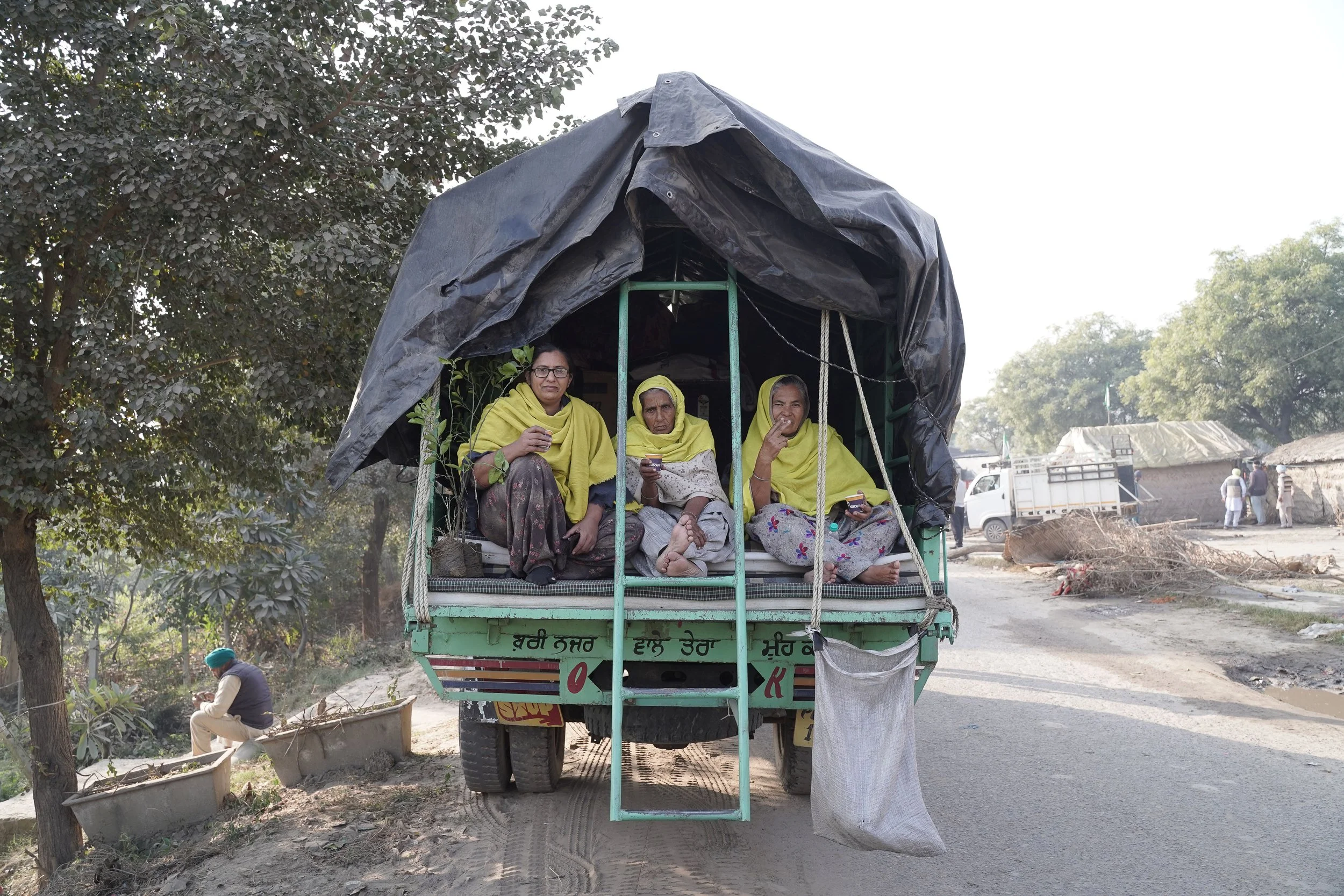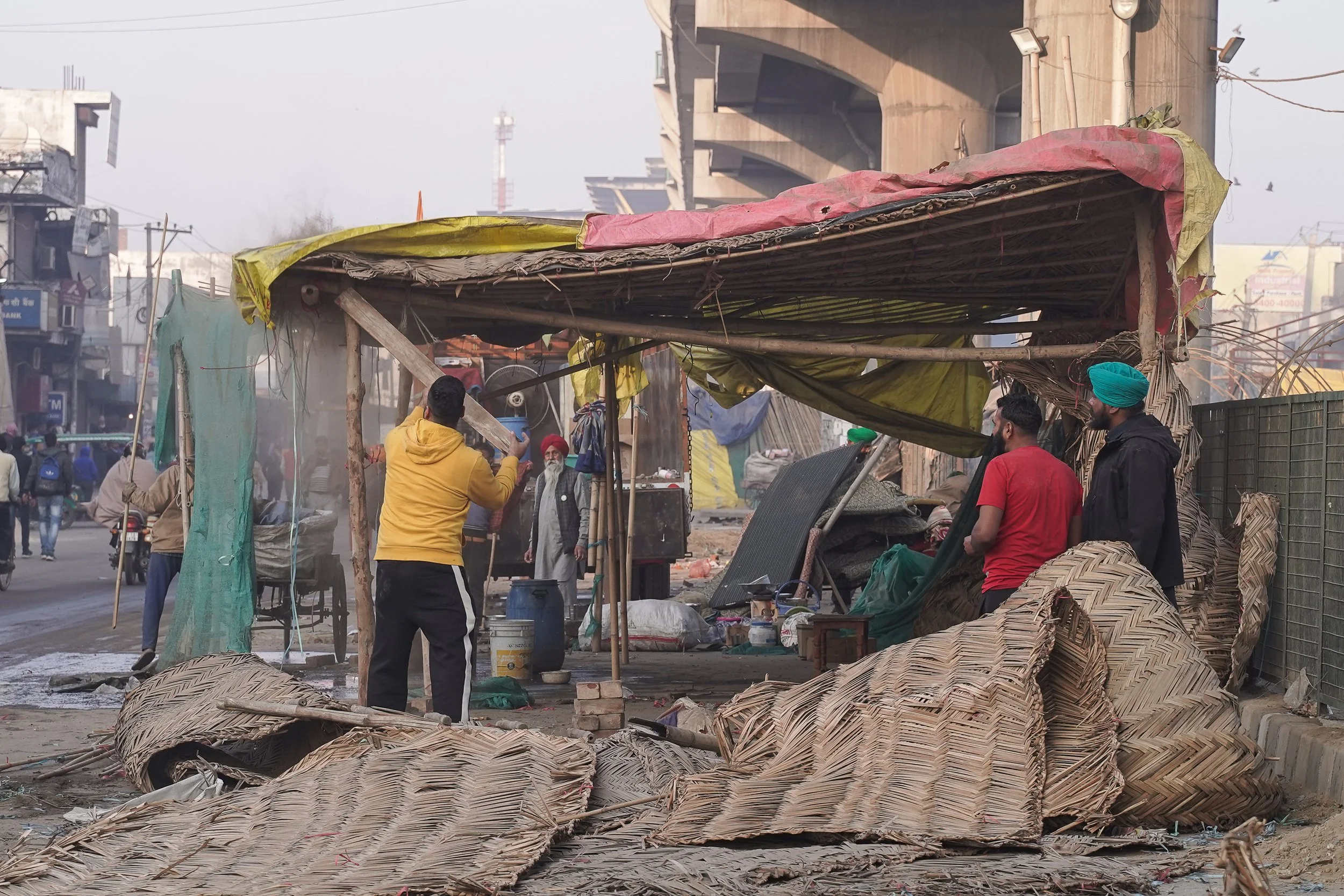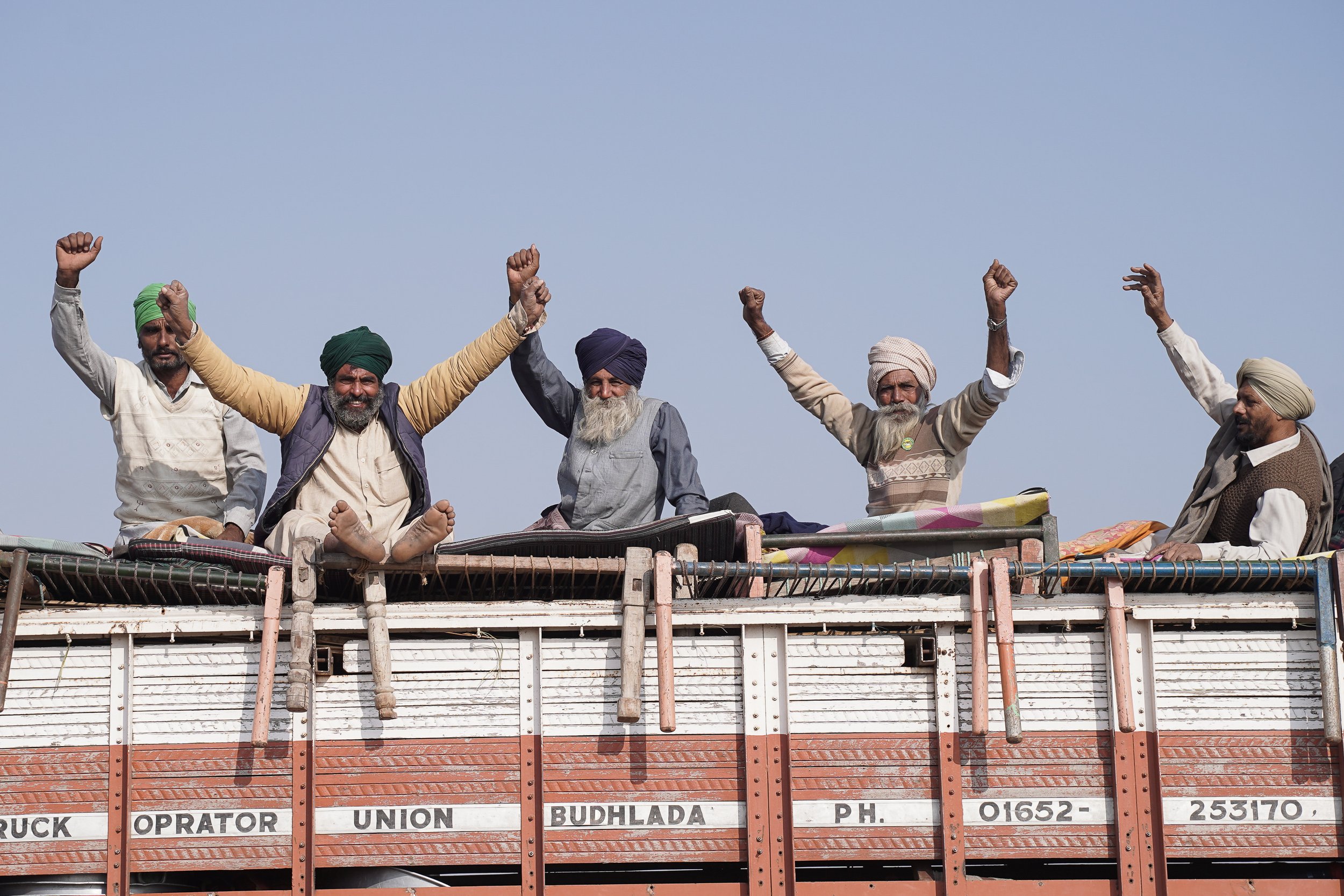Victories and Lessons from a Year of Protest
Text by Ruby Kaur
Photographs by Naveen Macro
Women were an important and visible part of the protests.
“It felt like the whole world was happy. We distributed sweets and burst firecrackers. It was a celebration.”
For Tej Singh, the occasion that merited this joy was the day in December when, after over one year, the farmers’ agitation in India officially came to an end. On Dec. 9, 2021, weeks after Prime Minister Narendra Modi announced his intention to repeal three controversial farm bills, the Samyukta Kisan Morcha (SKM), a coalition of 40 Indian farmers unions formed to facilitate the protests, called them off.
The decision came after the country’s President Ram Nath Kovind signed a bill repealing the laws, and the government promised to continue conversations with the farmers about their concerns.
For farmers like Tej Singh, who had faced strong opposition to dissent from authorities, the repealing of the bills was an especially sweet victory. After all, they had prevailed in the face of a government — and a Prime Minister — not known to concede defeat.
“You can’t even imagine what it took to keep the protest alive,” Tej Singh told me. “For over a year we endured everything — weather, rain, lack of stability and [violence]. They even drove a car into my fellow farmers.”
The latter refers to one of the most harrowing moments of the protests. On Oct. 3, 2021, the son of a union minister drove a jeep into a group of protesting farmers. Four farmers were killed, with additional deaths from the ensuing violence.
In total, the protests resulted in more than 700 deaths from causes such as suicide, extreme weather, illness and road accidents. The BBC reported on a devastating record of names of the deceased maintained by volunteers on the basis of on-ground reportage and newspaper articles.
***
Makeshift tents and other infrastructure put in place by the farmers played a crucial part in sustaining the protests.
In fact, it was through organisational and grassroot efforts that the farmers and labourers were able to document the protests and make sure their stories were witnessed and not forgotten.
Volunteers founded an onsite publishing office for Trolley Times, a trilingual newspaper circulated in Punjabi, Hindi and English, with an aim to “bring out protesters’ stories to them while they are camped out at Delhi borders.”
The official mission statement of Trolley Times explains that the goal of the publication is to combat partisan media that could “...create rifts in the movement.”
Through volunteer efforts, the movement was able to amplify the voices of farmers and labourers at the protests, while simultaneously building morale at the protest sites. Over the course of one year, these sites grew and evolved to resemble informal cities. Along with the publication office, the protest grounds also had community kitchens, laundromats, schools and libraries. Farmers and labourers from across the country occupied these informal cities, united under one goal.
Groups of farmers took turns to be present at the protests, while others returned home to tend to their fields.
Many farmers lived continuously at the protest sites, while others created a rotation system by which groups of farmers could take turns attending the protests, while also tending to their crops and family matters back home. Those who could not attend the protests offered their services and resources instead.
When he could not be at the protest sites in Delhi, Tej Singh offered his taxi, which he drives to supplement his farming income, as free transportation for others attending the protests. Sarvan Singh, a farmer from Nainokot in Punjab, often contributed food and other supplies.
Such organisational methods ensured that the protests could be sustained long-term. In successfully protesting for over a year, the farmers have created a precedent for India. They see their movement not only as hope for their future and livelihoods but also for the country, because they were able to have their voices heard and acknowledged both at home and in the global arena.
“When demonetisation happened, the whole country suffered but we couldn’t do anything. The leaders think we will blindly accept what they say,” said Sarvan Singh. He referred to the government’s overnight decision in 2016 to demonetise 86% of the country’s currency in circulation by declaring that all 500 and 1,000 rupee notes were no longer legal tender.
The aftermath left citizens in chaos, especially those without access to traditional banking or cashless systems such as banking apps or e-wallets. With their recent win, farmers such as Sarvan Singh hope that leaders can — and will — be held accountable for their actions.
***
Hoping to keep the momentum of the past year going, the SKM’s official statement notes: “[The] battle has been won and the war to ensure farmers’ rights, especially to secure MSP [minimum support price] as a legal entitlement for all farmers, will continue.”
Small scale farmers across India have relied on minimum support price, a guaranteed price for the sale of essential crops such as wheat and rice, to afford them protection and safety in volatile markets where large corporations can otherwise control prices. Through their ongoing discussions with the government, farmers hope to expand the list of crops currently protected under MSP.
The SKM hopes that expanding the list of protected crops will help farmers who cannot grow the crops currently supported under MSP, due to soil conditions at their farms. But most importantly, they hope that with an expanded list of MSP crops, states such as Punjab can break out of a crop rotation cycle that exclusively relies on paddy and wheat.
With guaranteed prices for additional crops, farmers would be able to diversify and move away from the wheat and rice that require more irrigation and chemical fertilisers. Which, in turn, has led to falling water tables, degraded soil and practises such as stubble burning, which exacerbate air pollution.
“If there was MSP on lentils, I would farm that over rice. I wouldn’t have to worry so much about water levels and digging my well even deeper,” said Tej Singh, explaining what expanded MSP would mean for him.
He echoed the concerns of other farmers like him, who bear the cost of monoculture.
“Land is everything to a farmer. Maybe by switching our crops, we can still save it.”
Both farm unions and farmers understand that the challenges of farming in India cannot be resolved solely by the repeal of these laws. But this is the beginning of a much needed conversation of change.
“I am hopeful that the government is ready to listen. But if they back out, we are all ready to go back to Delhi and start our protest again,” Tej Singh said.
After all, the future of farmers and farming in India depends on it.



